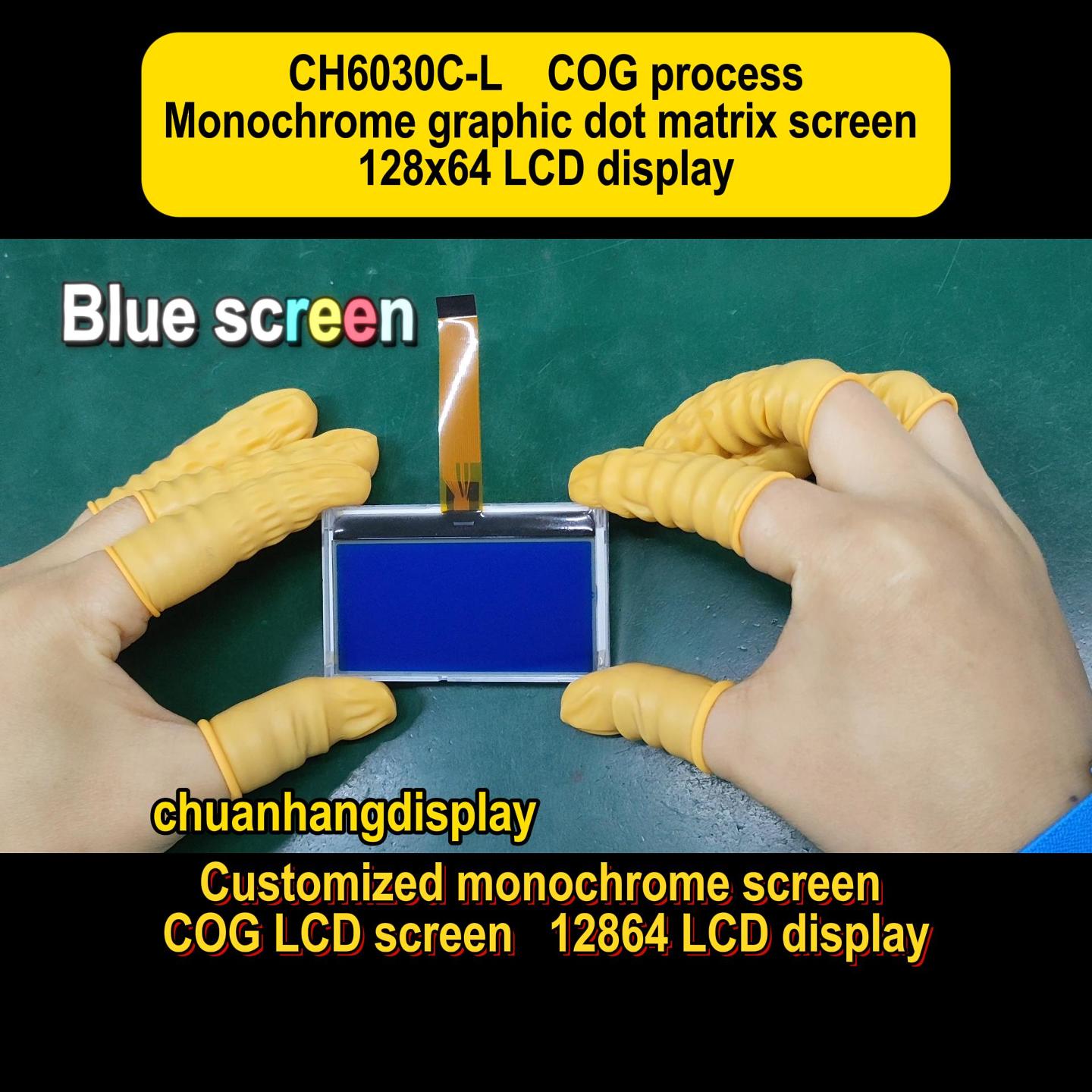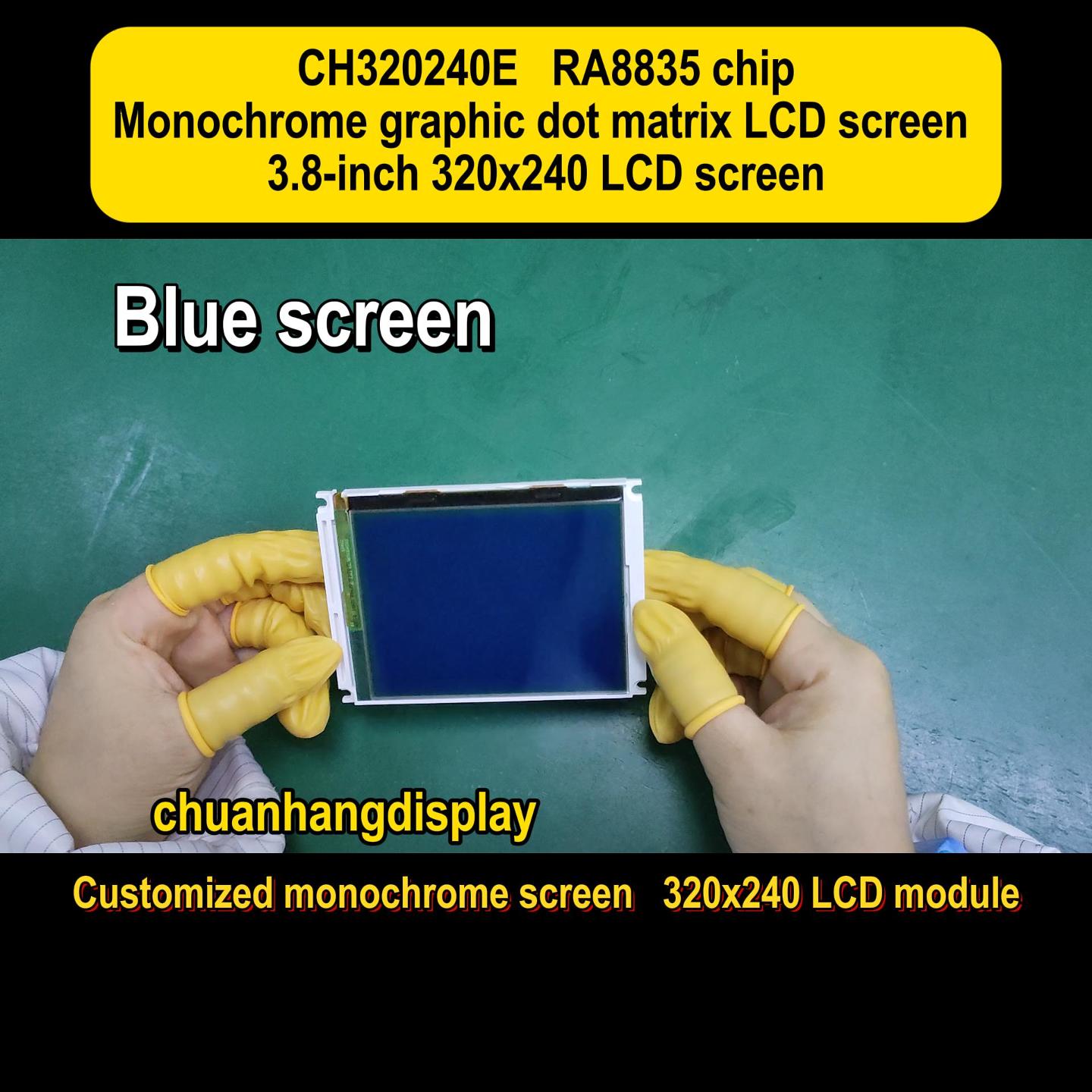In the world of electronics, display technology plays a crucial role in user interaction, and one standout option is the 128x64 graphic LCD display. This type of display, with its resolution of 128 pixels by 64 pixels, offers a versatile solution for various applications, from industrial equipment to consumer gadgets. As a popular choice among engineers and designers, the 128x64 graphic LCD display provides a balance of clarity, cost-effectiveness, and ease of integration. Whether you're working on a DIY project or a commercial product, understanding this display can help you make informed decisions. In this article, we'll delve into the specifics of graphic LCD technology, discuss how to select a reliable custom LCD display manufacturer, explore the components of an LCD display module, and address common questions and issues. By the end, you'll have a solid grasp of why the 128x64 graphic LCD display remains a go-to option in many fields.

Graphic LCD displays have revolutionized how we visualize data, moving beyond simple numeric readouts to full graphical interfaces. A graphic LCD, short for graphic liquid crystal display, allows for the rendering of images, text, and complex graphics, making it ideal for applications requiring detailed visuals. The 128x64 graphic LCD display is a common variant, offering a mid-range resolution that suits many projects without overwhelming costs. Unlike character-based LCDs, which are limited to predefined characters, graphic LCDs provide pixel-level control, enabling custom designs and animations. This flexibility is why graphic LCDs are favored in devices like medical instruments, automotive dashboards, and home automation systems. When considering a graphic LCD, it's essential to understand its underlying technology, which involves a matrix of pixels controlled by a controller chip. This setup allows for monochrome or grayscale displays, with the 128x64 size being particularly popular due to its compact form factor and adequate screen real estate. As we explore further, we'll see how this ties into broader trends in LCD display modules.
The 128x64 graphic LCD display stands out for its specific resolution, which provides a balanced canvas for various interfaces. With 128 pixels horizontally and 64 pixels vertically, it offers enough space to display menus, graphs, or small icons without requiring excessive power or memory. This makes the 128x64 graphic LCD display a cost-effective choice for embedded systems where resources are limited. For instance, in Arduino or Raspberry Pi projects, the 128x64 graphic LCD display can be easily interfaced using libraries, allowing hobbyists and professionals to create interactive displays quickly. One key advantage is its compatibility with different controllers, such as the KS0108 or ST7920, which simplify integration. Additionally, the 128x64 graphic LCD display often comes with a backlight, enhancing visibility in low-light conditions. When sourcing these displays, it's wise to consult a custom LCD display manufacturer like Chuanhangdisplay, which offers tailored solutions to meet specific requirements. By choosing a reputable supplier, you ensure consistent quality and support for your 128x64 graphic LCD display needs.
The versatility of the 128x64 graphic LCD display lends itself to a wide range of applications. In the industrial sector, it's used in control panels for machinery, where it displays real-time data and alerts. For consumer electronics, the 128x64 graphic LCD display can be found in smart home devices, such as thermostats or security systems, providing a user-friendly interface. Medical devices also benefit from this display, as it can show vital signs or diagnostic information clearly. Another growing area is the Internet of Things (IoT), where the 128x64 graphic LCD display serves as a local interface for connected devices. When integrated into an LCD display module, which includes the screen, controller, and connectors, the 128x64 graphic LCD display becomes a plug-and-play component, reducing development time. Companies like Chuanhangdisplay specialize in producing such modules, ensuring that the graphic LCD is optimized for specific use cases. Whether you're designing a portable gadget or a fixed installation, the 128x64 graphic LCD display offers reliability and adaptability.

Selecting the right custom LCD display manufacturer is critical when incorporating a 128x64 graphic LCD display into your product. A good manufacturer not only provides high-quality displays but also offers customization options, such as adjusting the viewing angle, backlight color, or interface type. For example, Chuanhangdisplay is known for its expertise in graphic LCD technology, allowing clients to specify parameters like temperature range or durability for harsh environments. When evaluating a custom LCD display manufacturer, consider factors like production capacity, lead times, and after-sales support. It's also important to discuss your needs for the 128x64 graphic LCD display upfront, as customization can affect cost and performance. A reliable manufacturer will provide samples and technical documentation, ensuring that the LCD display module integrates seamlessly with your design. By partnering with a trusted supplier, you can avoid common pitfalls and ensure that your graphic LCD meets industry standards.
An LCD display module refers to the complete package that includes the LCD screen, driver circuitry, and often a backlight, making it ready for integration. For a 128x64 graphic LCD display, the module typically comes with a controller that handles communication with microcontrollers or processors. This simplifies development, as engineers can focus on software rather than hardware details. The graphic LCD within the module is designed for ease of use, with standard interfaces like SPI or I2C. When selecting an LCD display module, verify compatibility with your system; for instance, the 128x64 graphic LCD display might require specific voltage levels or pinouts. Brands like Chuanhangdisplay offer modular solutions that are tested for reliability, which is essential for mass production. Understanding the components of an LCD display module helps in troubleshooting and optimization, especially when working with graphic LCDs that demand precise control.
Graphic LCDs, including the 128x64 graphic LCD display, offer several advantages over other display types. They consume less power than OLEDs, making them suitable for battery-operated devices. The monochrome nature of many graphic LCDs provides high contrast and readability, even in sunlight. Moreover, the 128x64 graphic LCD display is highly durable, with a long lifespan that withstands continuous use. From a design perspective, graphic LCDs allow for creative freedom, enabling custom logos or animations that enhance user experience. When combined with an LCD display module, the integration process becomes streamlined, reducing time-to-market. As technology evolves, graphic LCDs continue to improve, with versions supporting touchscreens or higher resolutions. For those sourcing from a custom LCD display manufacturer like Chuanhangdisplay, these benefits are amplified through tailored support, ensuring that the 128x64 graphic LCD display fits perfectly into your project.
Despite their reliability, 128x64 graphic LCD displays can encounter problems. One common issue is poor contrast or visibility, which might be due to incorrect backlight settings or voltage mismatches. To resolve this, check the datasheet and adjust the contrast potentiometer or software commands. Another problem is ghosting or stuck pixels, often caused by manufacturing defects or static electricity; in such cases, contacting your custom LCD display manufacturer for a replacement is advisable. Interface errors, like SPI communication failures, can occur if the timing or wiring is off—double-check connections and use oscilloscopes for debugging. For graphic LCDs integrated into an LCD display module, ensure that the controller is properly initialized in code. Additionally, temperature extremes can affect performance; select a graphic LCD rated for your environment. Chuanhangdisplay, as a experienced manufacturer, provides guidelines to mitigate these issues, emphasizing the importance of proper handling and testing for the 128x64 graphic LCD display.
Q: What is the typical operating voltage for a 128x64 graphic LCD display?
A: Most 128x64 graphic LCD displays operate at 3.3V or 5V, but it varies by model. Always refer to the datasheet from your LCD display module supplier, such as Chuanhangdisplay, to avoid damage.
Q: Can I use a 128x64 graphic LCD display with Arduino?
A: Yes, many libraries support the 128x64 graphic LCD display for Arduino. You'll need to connect it via GPIO pins and install libraries like U8g2 for easy programming.
Q: How do I customize a graphic LCD for my product?
A: Work with a custom LCD display manufacturer like Chuanhangdisplay to specify requirements such as size, interface, or environmental ratings. They can tailor the 128x64 graphic LCD display to your needs.
Q: What causes flickering in a graphic LCD?
A: Flickering often results from refresh rate issues or power instability. Ensure stable voltage and optimize software routines for the LCD display module.
Q: Is the 128x64 graphic LCD display suitable for outdoor use?
A: It can be, if equipped with a high-brightness backlight and wide temperature range. Consult your manufacturer for options designed for outdoor graphic LCD applications.
The 128x64 graphic LCD display remains a versatile and efficient choice for countless electronic projects. Its ability to render detailed graphics, combined with the support of reliable LCD display modules and custom LCD display manufacturers like Chuanhangdisplay, makes it a valuable component in modern design. By understanding its features, applications, and potential issues, you can leverage the full potential of this graphic LCD. As technology advances, the 128x64 graphic LCD display will continue to evolve, offering even more possibilities for innovation. Whether you're a hobbyist or a professional, incorporating this display into your work can lead to enhanced user interfaces and successful products.